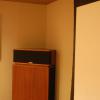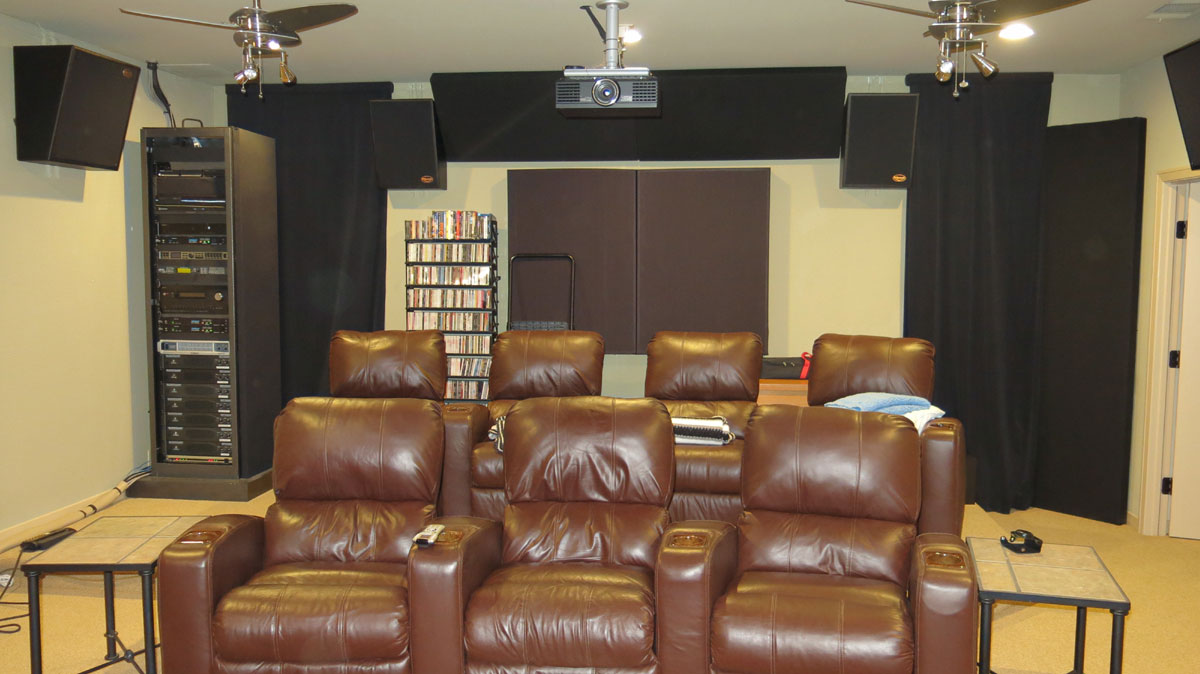-
Posts
3503 -
Joined
-
Last visited
-
Days Won
1
Content Type
Forums
Events
Gallery
Everything posted by psg
-
Boy, you are really getting upset. No, writing something under your post doesn't imply you said anything. It's called trying to have a discussion. I'm out.
-
But it doesn't mean they can't, and that's the actual point I am making. The original challenge I gave SkiBum was for illustration purpose only. To demonstrate that without any doubt, wire can make an audible difference, and that furthermore, just about everyone can hear it if the difference is large enough. If it's large enough, which it at one point it won't. Some of the claims made by pro-wire people are just wild. Getting way more bass from their speakers for example. If this were the case, it would be trivial to measure with a microphone and REW, but no-one ever has. Some claims can't be measured, sure, but some could be. Once, on another forum, someone was recommending spending a $1500 speaker budget on $1000 speakers and $500 wires to get the best out of them, saying there was no point getting better $1480 speakers to run them on $20 wires from monoprice; that was throwing money away. I haven't had a turntable for 25 years. Interconnects and wire wire are different animals anyway.
-
I was generalizing to (1) the video (wrt burn-in) and (2) what some speaker wire manufacturers are actually selling, which isn't gauge; it wasn't my intent to put words in your mouth. So fine, to reply to you specifically: if I can hear the effect of 26 AWG, it doesn't mean that others can hear the difference between a sufficient gauge and an even larger one.
-
I would suggest a simple experiment you can do at home. Connect your speakers with 20 feet of 26ga wire and give a good listen. Then connect them with 20 feet of 12 ga and repeat the listening test. It has nothing to do with "magic." I said earlier this is not about the ads produced by wire and cable companies, it is about the listening. No magic is involved - ever. When you begin by denigrating a class of people as "audiophools" you tip your hand and reveal a bias that is probably too strong to over come. But who knows? Try the test if you like, and see if you hear anything. Why would I intentionally use a cable that will roll off the highs? Sorry Mark, but comparing a long run of narrow gauge wire just supports the science, not the woo. I tend to err on the conservative side: all my rigs use 14 or 12 gauge, all came off a spool as tall as I am at the local electronics surplus/wholesale store for pennies/foot. They even had techflex and all the goodies to spiff them up. +1 on that! Sure, wire gauge matters. So we go big enough to minimize resistance for the length required and large enough for the current draw. Saying that if you can hear the effect of 26 AWG, then don't discount that people can hear burn-in or cryo treatments is not a valid argument to me; one is rooted on known principles and the other isn't. Most fancy wire brands aren't selling bigger gauge; you can get that cheap from monoprice. They are selling other qualities. Anyway, I like to keep my participation in this forum free of useless arguments, just as I stay away from them at family gatherings.
-
Do you pipe insulation foam to seal the speakers to the walls? No bass could be also be from room interaction rather than the receiver (unless it is setup with speakers set to small instead of large as mentioned above)
-
+1 on that door!
-
Yes for the high frequency riding on top. Thus, yes, clipping affects high frequencies drastically during the clipped part of the low signal. Whether this creates more high frequencies to kill tweeters, or perhaps less high frequency is a good question, since sometimes there's no voltage headroom left to add them at all (leading to less HF signal). Correct also that higher frequencies are generated by the clipping itself as in a Fourier Expansion of the square(ish) wave. This generates harmonic distortion, some of which may reach the tweeter past the crossover frequency, but most of which will affect the woofer as distortion. Thanks for posting the figures! They make it easier for people to understand.
-
Maybe if you could extend the THT hornpath another 6', but that would require wrapping the horn around two more sides of the existing driver, and the horn mouth would be as big as the whole THT you started with. To reach 15 Hz you mean?
-
It's what I use. I gather XT32 would work automatically?
-
Any of the THT, dual SPUD, Cinema F20 or lilwrecker will keep up and then some. Tapped horns (such as the SPUD) absolutely need EQ while horn-loaded subs still benefit from it, so factor that in as well.
-
-
Already have. Bass response is very room-dependent anyway, but I don't recall people bragging about the 15 Hz capability of the THT. BTW I didn't say that I couldn't shake the house with 20W; I just wouldn't be doing it at 15 Hz. I put in a high-pass filter in the low teens anyway to avoid over-excursion. https://community.klipsch.com/index.php?/topic/120571-diy-sub-for-klipschorn-based-ht-and-music-tuba-ht-build-done-except-for-finish/page-26#entry1664879
-
Do you mean Tuba HT? No way you can hit 15 Hz hard with it AFAIK. I'd say 19 Hz. So maybe go IB?
-
This explains how to blow a woofer (because clipping usually occurs at woofer frequencies) but not the tweeter. But I guess I didn't specify that in my myth title phrase. No, it would be worse, because the 200W would also be into severe clipping (and outputting 400W). i.e. you can't get to extreme clipping in the first place by raising the volume control by 3 dB over maximum whereby the 200W would still be fine. You probably raised it by 10 or 20 dB to make a square wave (that has double the power of a sine wave).
-
Thanks Youthman. I'm sure someone will find something to argue with, and that's okay as long as we keep it to content and not personal. But I am not in it to get into an argument; thus my reluctance to post it.
-
I liked it too!
-
Ok... Too much power is better than having too little due to clipping and distortion is a myth, for various reasons. Sure, clipping makes a square wave, which consists of high frequencies added on to the fundamental, but do the math and the power drops quickly with each harmonic. You'd have to be attempting to play a sine wave that happens to be close to the crossover frequency and clip it like crazy for the amplifier to generate really high power that would reach the tweeter; most of the clipping distorsion is still going to go to the woofer at sub-crossover frequencies. Power kills tweeters. They generally accept much less power than woofers do, so if you have a 500W amp and keep cranking the volume because the woofer still sounds good, then at some point you will surpass the limit of the tweeter. On the other hand, do the same with a 3W amp and how much damage can you do? At some point it will clip and start to sound bad and you'll turn it down without damaging anything. Do the same with a middle-ground 100W amp and here's where the myth comes alive. Say your woofer is getting 100W and your tweeter is getting 5W and everything is good but at the limit of both the woofer and tweeter. You crank it past clipping by 6 dB, but the SPL isn't getting much higher because (1) the woofer is already at it's excursion limit and compressing and (2) the amplifier isn't giving it much more voltage excursion anyway because its clipping. However, most of the clipping power is going to the woofer at first harmonics, not reaching the tweeter. But the music program content reaching the tweeter has increased by nearly 6 dB and is now close to 20W (some of it clipping because it's riding on top of low frequencies clipping, but some of it not clipping in parts of the low frequency signal that goes below rail voltage). Opps, the 20W fried the tweeter. You'd blame clipping but actually you just raised the volume enough for the regular program material to fry the tweeter. As for the argument that the coil stops moving because of clipping: It has mass and isn't going to stop instantanously when made to oscillate 100 times per second. Won't happen. It will distort like crazy but won't stop moving.
-
Start a thread and I might go there.
-
There was belief at one point from some critics. With the rise of ht, that there would be less multiplex theaters, and movies would be simultaneously be released to pay per view or alike for a high price something around the 60.00 rental fee. But I haven't seen any of that happen yet. It may not since there were reports of less people building dedicated ht. Would be cool, and save me money to watch a movie. Renting for $60 would save you money? As opposed to renting for $5 now?
-
The OP did not mention screens, but I disagree on both fronts. For video, sure an AT screen has less gain than an opaque screen, but you don't need a super light canon for one either. I have no problems with this using a BenQ W6000. For audio, my mid-grade screen has about a 1 dB attenuation that is pretty even, so no EQ required.
- 14 replies
-
- Cornwalls
- Home Theatre
-
(and 1 more)
Tagged with:
-
I'd argue with that but this isn't the place.
-
Thanks guys. In my case, the back has a hinged panel accessible in an adjoining utility room.
-
Made mine out of 5'x5' sheets of 1/2" birch plywood. That gave me nine shelves. I think I got another 3 from another sheet and used the rest of the second sheet to make the 5' high sides. Stained and varnishes the plywood, assembled with a top and bottom and a fixed middle shelf. The rest are dropped onto pins in the side walls. Look like this : https://community.klipsch.com/index.php?/gallery/image/90-dsc-13472r800/




